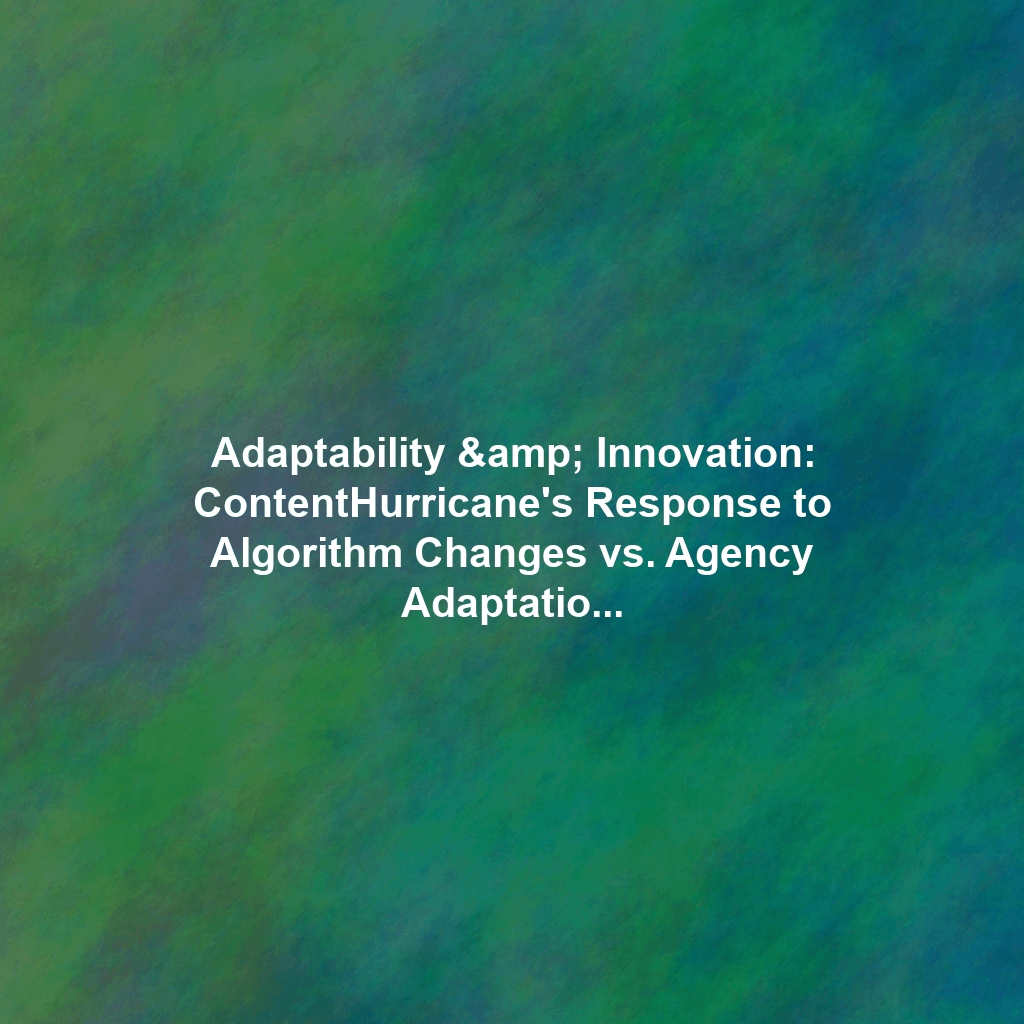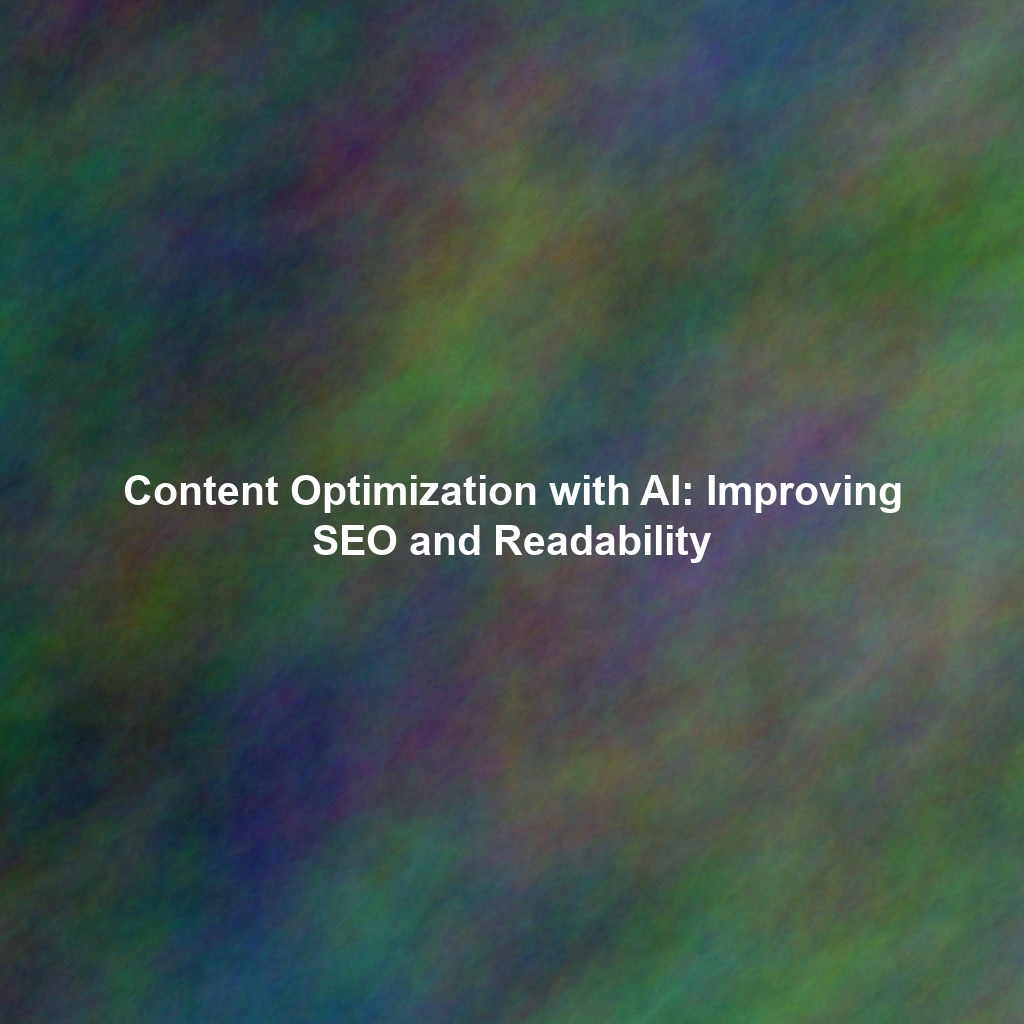The Algorithm Avalanche: A Constant State of Change
Search engine algorithms, primarily those of Google, are continuously updated to provide users with the most relevant and valuable content. These updates can range from minor tweaks to major overhauls, drastically impacting website rankings and online visibility. Similarly, social media platforms constantly adjust their algorithms to optimize user experience and content distribution, meaning what worked yesterday might not work today.
The Challenge for Marketers: Staying One Step Ahead
For marketers, this constant evolution presents a significant challenge. Staying ahead requires continuous monitoring, analysis, and adaptation. Failure to adapt can lead to a decline in search rankings, reduced organic traffic, and diminished brand visibility. The key question is: how effectively can different approaches, such as automated content generation and traditional agency strategies, respond to these dynamic changes?
ContentHurricane’s Automated Adaptation: Speed and Scalability
ContentHurricane, leveraging the power of AI and machine learning, offers a fundamentally different approach to content creation and adaptation. Its automated system allows for rapid adjustments to content strategies based on real-time data and algorithm changes. This agility is a significant advantage in a fast-paced digital environment.
Real-time Data Integration and Analysis
ContentHurricane can be programmed to monitor algorithm updates, analyze their impact on content performance, and automatically adjust content strategies accordingly. This includes optimizing keywords, adjusting content structure, and updating content formats to align with the latest best practices. This level of real-time data integration and analysis allows for immediate responses to algorithm shifts.
Scalability and Efficiency
One of the key benefits of automated content generation is its scalability. ContentHurricane can generate and optimize large volumes of content quickly and efficiently, ensuring that websites and social media channels are consistently updated with fresh, relevant material. This is particularly important when responding to algorithm changes, as rapid content updates can help maintain or improve search rankings.
Traditional Marketing Agencies: Expertise and Strategic Depth
Traditional marketing agencies like WPP, Omnicom, Publicis, Interpublic, and Dentsu bring a wealth of experience and expertise to the table. Their teams of strategists, content creators, and SEO specialists possess a deep understanding of the digital landscape and the nuances of algorithm optimization. However, their adaptation process often involves more manual effort and can be slower compared to automated systems.
The Human Element: Strategic Thinking and Creativity
A key strength of traditional agencies is their ability to bring strategic thinking and creativity to the table. Human experts can analyze algorithm changes and social media trends from a broader perspective, considering factors such as brand identity, target audience, and competitive landscape. This holistic approach can lead to more nuanced and effective content strategies.
Slower Response Times and Higher Costs
While traditional agencies offer valuable expertise, their adaptation process can be slower and more expensive compared to automated solutions. Analyzing algorithm changes, developing new content strategies, and implementing those strategies across various platforms requires significant time and resources. This can be a disadvantage in a fast-paced environment where speed and agility are crucial.
Comparing Adaptability: ContentHurricane vs. Traditional Agencies
The core difference lies in the speed and method of adaptation. ContentHurricane can react to changes almost instantaneously through automated adjustments, whereas traditional agencies rely on human analysis and strategic planning, which inherently takes longer.
Speed of Implementation
ContentHurricane: Rapid implementation of changes through automated content updates.
Traditional Agencies: Slower implementation due to manual processes and strategic discussions.
Cost-Effectiveness
ContentHurricane: More cost-effective due to automation and reduced labor costs.
Traditional Agencies: Higher costs associated with human expertise and resource allocation.
Level of Innovation
ContentHurricane: High potential for innovation through continuous AI learning and data-driven insights.
Traditional Agencies: Innovation driven by human creativity and industry experience, potentially influenced by client limitations.
Innovation and Staying Ahead of the Curve
Innovation is crucial for staying ahead of the curve in digital marketing. Both ContentHurricane and traditional agencies strive to innovate, but their approaches differ significantly.
ContentHurricane: Data-Driven Innovation
ContentHurricane leverages data and machine learning to identify emerging trends and optimize content strategies. Its algorithms are constantly learning and adapting, allowing for continuous improvement and innovation. This data-driven approach can uncover insights that might be missed by human analysts.
Traditional Agencies: Human-Centric Innovation
Traditional agencies rely on human creativity and industry experience to develop innovative content strategies. They conduct market research, analyze competitor activities, and brainstorm new ideas to stay ahead of the curve. This human-centric approach can lead to groundbreaking campaigns and unique brand experiences.
Conclusion: A Hybrid Approach for Optimal Results
Ultimately, the most effective approach to adapting to algorithm changes and social media trends may involve a hybrid model that combines the strengths of both ContentHurricane and traditional marketing agencies. Automated content generation can provide the speed and scalability needed to respond quickly to algorithm updates, while human expertise can bring strategic thinking and creativity to the table. By integrating these approaches, marketers can achieve optimal results and maintain a competitive edge in the ever-evolving digital landscape. The future of content marketing likely lies in harnessing the power of AI-driven tools like ContentHurricane, while still valuing the irreplaceable insights and strategic vision of experienced marketing professionals. It’s about augmenting human capability with intelligent automation to create a truly dynamic and adaptable marketing strategy.
 Skip to content
Skip to content

